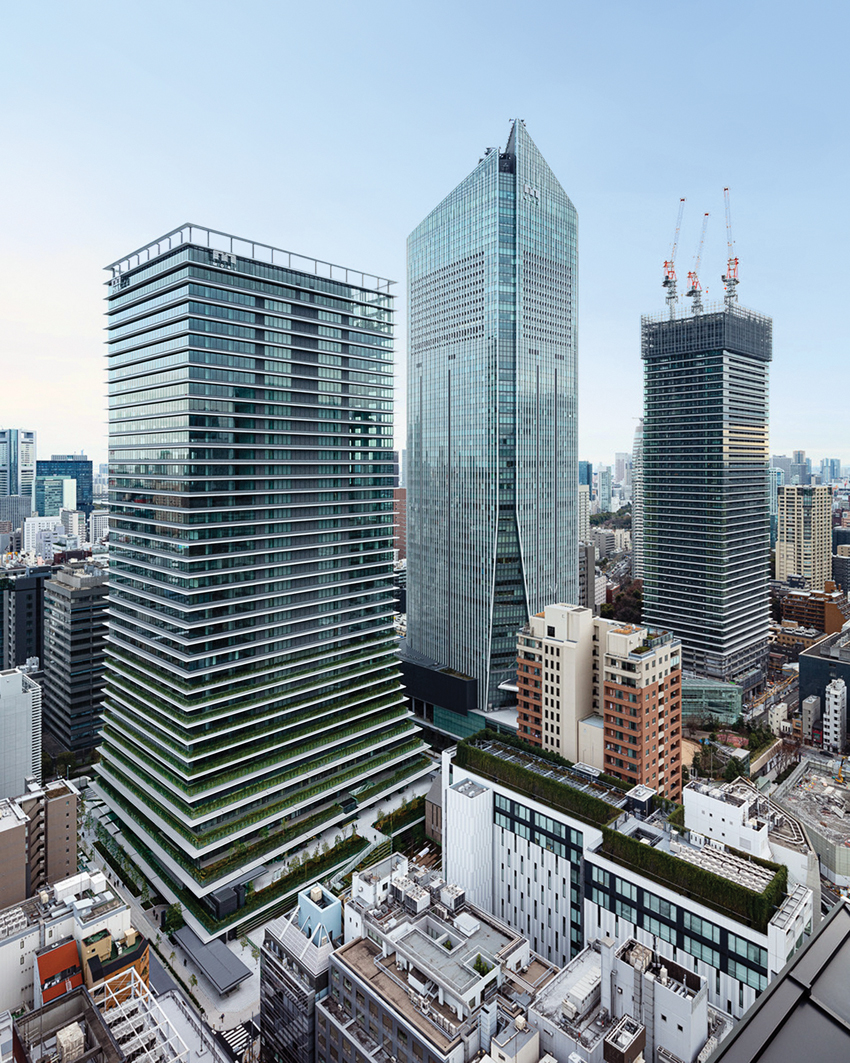Carbon Policy
Tokyo
A decade ago, recognizing that commercial and industrial buildings—including its iconic high-rise towers—produced almost half of the city’s total carbon emissions, Tokyo started the world’s first urban carbon cap-and-trade initiative. The mandatory program aims to reduce CO2 emissions by 30 percent and energy consumption by 38 percent, compared to 2000 levels, in 1,400 of the city’s largest carbon emitters. Although the facilities covered by the program represent just 2 percent of the total number of Tokyo’s commercial buildings, they account for nearly 19 percent of emissions, making the policy “effective and powerful,” says Satoshi Chida, Tokyo Cap-and-Trade Program (TCaTP) director, and a critical element in the city’s plan for achieving zero emissions by 2050.
Implemented in five-year phases, the TCaTP places increasingly stringent limits on emissions, while also creating a framework for trading carbon credits. Facilities with reductions in excess of the required caps receive credits, which can be banked for future use or sold to facilities with deficient reductions. To further incentivize high-performance building design, Tokyo annually recognizes “top level” and “near top level” facilities and awards them, in recognition of their early actions, a relaxation of the caps in future phases.

PHOTOGRAPHY: © SS INC.
Mori Buildings’ Toranomon Hills mixed-use complex, with towers by Ingenhoven Architects (at left and at right in photo), Nihon Sekkei (at center), and eventually OMA, depends on high-performance design and 100 percent renewable energy.
Tokyo clients and architects are responding to the city’s increased emphasis on energy efficiency through state-of-the-art facilities and innovative building-management schemes. Mori Buildings, one of Japan’s largest developers, is promoting high-performance design and the use of 100 percent renewable energy throughout Toranomon Hills, a mixed-use complex rising in central Tokyo. The first building, the 2014 Toranomon Hills Mori Tower, designed by Nihon Sekkei, was certified as a top-level facility in 2018. Two subsequent structures, by Düsseldorf-based Ingenhoven Architects, are a just-finished office tower and a residential high-rise slated for completion early next year. Both are expected to achieve top-level status. With features such as planted outdoor ledges, high-performance glazing, photovoltaics, and advanced lighting and mechanical systems, firm founder Christoph Ingehoven hopes his designs “will influence the way Tokyo develops over the next 20 years, with more planted facades, more public green space, and high levels of sustainable-building certifications.” The complex’s final building, the Toranomon Station Tower, OMA’s first high-rise in Tokyo, recently broke ground and also is targeting significant reductions in energy consumption and CO2 emissions.
The program has been achieving better than expected reductions. The goal for the TCaTP’s initial phase (2010–14) was a 6–8 percent reduction from base year CO2 emissions, followed by a second phase (2015–19) goal of 15–17 percent. But the results showed a 25 percent decrease by 2014 and a 27 percent reduction by 2018.
Initial reductions were achieved in part due to stringent energy-use restrictions in the aftermath of the 2011 Fukushima nuclear power plant accident, but also through improved operations, changes to building systems and equipment, and modified tenant behavior. Chida notes that the program has made the city’s buildings more resilient. Since owners and tenants already had begun to take action to reduce energy use to comply with TCaTP, they were better prepared for the restrictions that followed the nuclear plant’s shutdown, he says. Once restrictions were lifted, reductions were still achieved, even though Japan became more reliant on carbon-intensive electricity sources, depending on imported oil, natural gas, and coal.
So far, the cuts have been brought about mainly through decreased consumption, or meeting the “caps.” Chida predicts that the “trade” part of the program will see more use in phases three and four, which each mandate an additional 10 percent reduction, as it will be increasingly difficult for existing facilities to meet these progressively stringent targets.
The trading of credits will also come into play for the 2020 Tokyo Olympic/Paralympic Games, now postponed until summer 2021. The Tokyo Metropolitan Government developed a separate Sustainability Plan for the renovated and newly constructed sports venues and is working to secure donations of credits from TCaTP to offset the Games’ emissions. After the Games, large-scale Olympic/Paralympic facilities will come under the cap-and-trade program. Mira Locher, FAIA
An educator, author, and architect working in the U.S. and Japan, Mira Locher teaches at the University of Utah and is a partner in Kajika Architecture.
 |
Architectural Record is the #1 source for design news, architect continuing education, and info on sustainability, houses, projects, and architectural products. |








